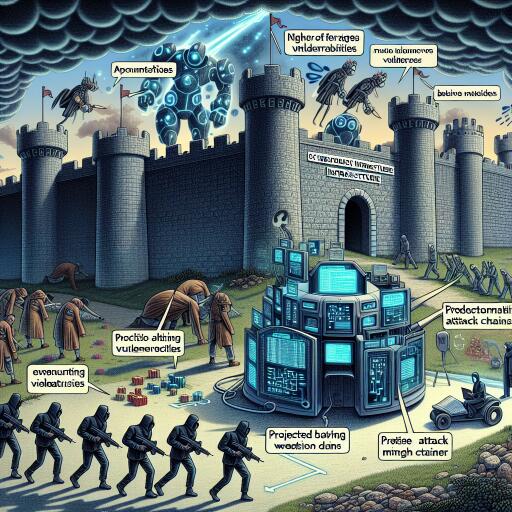Cybersecurity Update: Bridging Vulnerabilities in Critical Infrastructure and Advancements in Attack Prediction
As the digital landscape evolves, so too does the sophistication of cyber threats, emphasizing the urgent need for advanced cybersecurity measures. This article delves into recent discoveries and technological advancements in the field of cybersecurity.
1. Widespread Vulnerabilities in Critical Infrastructure
In a revealing insight into the state of cybersecurity within critical infrastructure sectors, a recent investigation has highlighted a concerning level of vulnerability to basic hacking techniques. Organizations pivotal to the nation’s wellbeing, including those involved in energy, water supply, and telecommunications, have been found susceptible to attacks that exploit well-known vulnerabilities and rely on traditional hacking methods such as phishing and the misuse of default credentials.
The findings stem from an extensive review conducted by the U.S. Cybersecurity and Infrastructure Security Agency (CISA), which evaluated the security postures of 143 critical infrastructure entities. The review uncovered that attackers could easily gain initial access and move laterally within these networks, primarily by hijacking valid accounts and exploiting weak or default credentials.
In response, CISA issued detailed reports to the assessed organizations, featuring key findings and recommendations to bolster their cyber defenses, laying a solid foundation for strengthening national security against cyber threats.
2. MITRE Engenuity Unveils a Machine Learning-Based Cyberattack Predictor
In a groundbreaking development, MITRE Engenuity has introduced a novel tool poised to transform how cybersecurity teams predict and respond to cyberattacks. The Technique Inference Engine (TIE) employs machine learning to analyze initial attack tactics or techniques identified within an entity’s digital environment. Based on this analysis, TIE forecasts subsequent attack sequences, enabling security teams to preempt further adversary actions effectively.
This innovation represents a significant leap forward in cybersecurity, offering a proactive approach to defense and enhancing the capability to stay one step ahead of attackers. Developed in collaboration with leading cybersecurity organizations, including Tenable Research, TIE signifies a major milestone in employing artificial intelligence to secure digital assets.
3. Elevating Cybersecurity Standards Among Federal Agencies
In an initiative spearheaded by CISA, the U.S. government is taking decisive steps to unify and elevate cybersecurity practices across federal civilian executive branch agencies. The Federal Civilian Executive Branch (FCEB) Operational Cybersecurity Alignment (FOCAL) Plan aims to establish a consistent, high-level cybersecurity posture to better manage and mitigate cyber risks in an increasingly complex threat landscape.
This coordinated effort highlights the recognition of cybersecurity as a shared responsibility, necessitating a collaborative approach to safeguard national interests and security.
4. Tackling International Cyber Threats: Botnet Takedown
In a significant victory against international cybercrime, a collaborative operation led by the FBI has successfully dismantled a substantial botnet controlled by Chinese interests. This network, comprising over 260,000 IoT devices, was employed in stealthy information-stealing campaigns targeting the U.S. and other nations. The operation not only neutralized the botnet but also reinforced the resolve to combat state-sponsored cyber threats.
The FBI has since issued recommendations for enhancing IoT device security, underscoring the importance of vigilance and proactive measures in protecting digital ecosystems from unauthorized access and exploitation.
5. Addressing Persistent XSS Vulnerabilities
Despite being easily preventable, Cross-Site Scripting (XSS) vulnerabilities continue to plague software products, posing significant security risks. A joint advisory by CISA and the FBI has called on technology manufacturers to eliminate such vulnerabilities by adopting secure design practices. These include rigorous input validation and sanitization, essential steps in preventing malicious script injections and enhancing web application security.
6. Enhancing Security Configurations Across Major Platforms
In another stride towards improved cybersecurity, the Center for Internet Security (CIS) has updated and released new benchmarks for securing critical technology products and platforms. These guidelines cover a range of software and systems, from Microsoft’s Windows Server to Google’s ChromeOS and Apache’s Cassandra database, offering organizations robust strategies for hardening their infrastructures against cyber threats.
The continuous efforts to identify vulnerabilities, combined with innovative defensive tools and standardized security practices, embody the dynamic nature of cybersecurity. These developments not only address current challenges but also lay the groundwork for a more secure and resilient cyber landscape.









